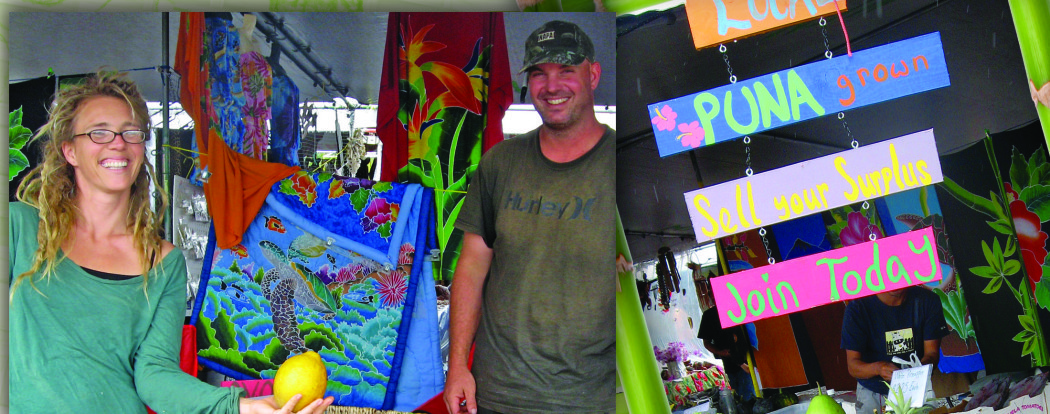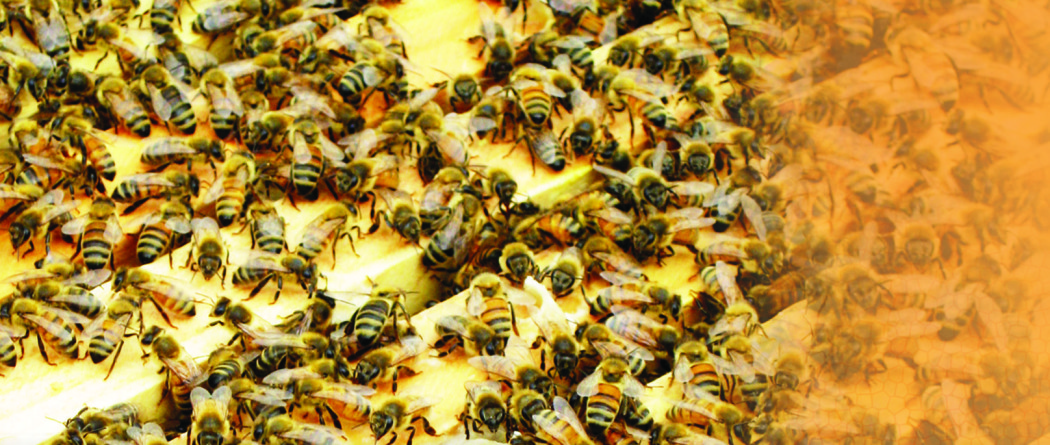
Save the Bees, Save the Planet: Listening to the Buzz with Bee Oracle Alison Yahna
 By Marya Mann
By Marya Mann
A honeybee swarm came to Alison Yahna and it changed her life forever.
The bees came in a swirling rush, alighting on a small cedar tree near her home. With help from a friend she moved the swarm from the tree into a beehive, and the little winged creatures crawled by the thousands up her bare arms.
“Make your spirit like honey, make your spirit like honey.” She calmed herself by repeating over and over the words from a prophetic dream she’d had a week earlier. “Make your spirit like honey, and attract the bees like honey.”
That first swarm came to Alison, a high school biology teacher in Portland, Oregon, in April of 1999. It was seven years before the worldwide honeybee decline brought fear to the bones of every beekeeper and farmer on the planet in 2006. The bees knew, says Alison. They had been asking her to bring their message into the world.
Inner guides had informed her: “We are going to prepare your body to contain a higher vibrational frequency.” To help prepare her to be a vessel for their message, they gave her a meditation: Alison was specifically instructed to hum and buzz like a bee.
After the swarm arrived, she began to receive information from what she calls the “over-lighting spirit of the hive” during her humming meditations. The bees warned Alison that they were sick and they would be “leaving” in catastrophic numbers. The bees asked her to move to Hawai’i, create a honeybee sanctuary, and build a temple that echoed the ancient bee temples she had visited during a series of shamanic journeys.
An other-worldly tale, nevertheless it isn’t simply what Alison says that gives authenticity to her visions of the hive, but her intelligent and unassuming presence, innocence and a burning desire to help the natural world. That passion earned her a Fulbright Grant to teach high school in Zimbabwe, where she absorbed indigenous methods of learning and received early hints of a path which continues to inspire her.
The ancient tradition of bee shamanism is known by its members as the Path of Pollen. For Alison and others who practice bee-loving as much as beekeeping, the honeybee and hive are not merely metaphors—creators of food or fertility—they are the source of a rich body of ancient wisdom. Bee shamanism itself, although obscure and hidden, has been practiced all over the world—the Americas, Australia, Africa, Greece and Egypt.
One branch of the path exists at Alison’s Artemis Smiles Honeybee Sanctuary and Education Center in Ka‘ū, where naturalized Hawaiian honeybees are facing not just a host of problems, but a great opportunity.
Artemis Smiles Bee Sanctuary
The bee hive hums. Forty thousand bees dance on the combs of a natural, glass-encased hive, hanging six feet above our heads inside her Waiohinu home, which also serves as office, bee education center and “honey house.” There she processes the wax, honey and propolis produced by the bees. Lining the shelves are glass canning jars of wildflower and wililaiki honeys, pollen-filled bee bread and honeycomb, fresh and fragrant from the sanctuary’s two dozen hives.
With the gentle but resonant voice of a true seer, Alison uses her hands to speak, gesturing toward the humming bees, who also communicate through dance. (Their dance forms a figure eight, an infinity symbol, the lemniscate infinitum.) “This hive is like my altar,” says the bee oracle, explaining why she keeps bees in her kitchen. “That’s as close as I can get. Their sound, their scent, their sacred presence is a gentle, constant reminder to return to Source.”
Over mamaki tea sweetened with jasmine-scented honey, Alison speaks of the “modern essence of the lineage,” and how, under the guidance of a shamanic healer, she had learned to see and hear beyond the bounds of ordinary consciousness. To the rhythmic beating of a traditional frame drum, she traveled through non-ordinary states, “journeying” to discover her innate wisdom.
On her first shamanic journey, Alison relates, she met the guide who would become her primary teacher over the next three years. The guide called herself Demeter, a name with which Alison, then 29, was unfamiliar. It wasn’t until the arrival of the honeybee swarm three years later that she discovered Demeter’s ancient epithet was “The Pure Mother Bee,” whose presence had filled the goddess temples of Artemis and Aphrodite. She learned that temple priestesses were called melissae, Greek for “bees.”
Guided by the bees’ messages, Alison left her teaching job, sold her house and moved to the Island of Hawai‘i to start the sanctuary in 2001. The creative power of the human mind has a physical effect upon them, the bees cautioned, and some of the “illness” was due to falling, within the collective human consciousness, from a revered place of love and appreciation, into a state of exploitation and profit-driven manipulation.
To emphasize this point, and so that she could understand the place from which she was giving the bees a “sanctuary,” Alison was guided to work for a commercial queen bee producer. “The practices and attitudes of commercial beekeepers are a far cry from what the bees experienced when they were revered as a manifestation of the Divine,” says Alison.
Raise Up the Queen
The bees who gave the oracles at Delphi and Ephesus their prophetic power, pleaded with Alison during shamanic meditations: “The Queen has fallen! Raise up the Queen, raise up the Queen!”
Alison came to understand that one of the most important things we can do for the bees’ health is to offer them love and gratitude for their service to humanity and nature. “As humans we have been taking this divine being that we used to hold in reverence and diminishing it to serve our needs.”
“A lot of people understand that bees are getting sick, that they’re leaving,” says Jaya Sith Bavananda, Alison’s friend and collaborator on the bee temple project. “But we’re looking at it from a spiritual perspective, not from a scientific perspective that says, ‘We just need to breed better queens.’”
As at Delphi, where the oracle spoke through a priestess known as the “Delphic Bee,” some bee communications concern human affairs, says Alison. “The bees say humans are on the cusp of a great shift in consciousness—from this individual, ego-consciousness into something that is more like what the bees experience.”
What do the bees experience? Hive consciousness. Just as an individual cell in a body is embedded within the larger consciousness of the organism, so the consciousness of the individual bee is embedded within an even greater, super-consciousness. For the bees, this connection offers a great nurturing source. The queen bee’s powerful presence holds the consciousness of tens of thousands of individual bees within a common field. “Scientists call this a super-organism. A colony of honeybees is really ONE single being,” Alison muses, “and so are all of us humans. We just don’t realize it quite yet.”
“It’s all coming from the bees,” declares Jaya. “The bees are the guides. We have simply been the conduits for bringing in this message. Bees can unite so many people. After all, everybody loves honey.”
Alison opens a golden jar of honey and Jaya shows me a book by Simon Buxton entitled The Shamanic Way of the Bee, which details the Path of Pollen practiced in the ancient Celtic traditions of Europe. The book, published in 2004, confirmed for Alison that her experiences with the bees were part of an ancient tradition, one still practiced today.
The Honey Jar
I dip my finger into the honey jar and savor the taste of solar radiance, fresh oranges, butterscotch and even a hint of sea salt. Honey harvested from the wild areas of Ka‘ū, uncontaminated by pesticides and fertilizers, comes from her beloved bees, whose natural life cycles and processes are deeply respected. Some of Alison’s bees feed each season on just one type of flower—like Ka Lae kiawe, which blooms after the winter rains, or golden Christmas berry, whose nectar flows in late summer—to create distinctive, single-blossom honey varieties.
“It takes the nectar from 3 to 4 million flowers to make a cup of honey,” she says. “It’s really special. I treat it as a sacred food.”
Alison, calling the bees “my girls” and soothing them with the soft cooing of a loving mother, hand-harvests sanctuary honey without protective clothing. The honey is never processed, heated or filtered, and so preserves its intoxicating flavor and healing properties. For thousands of years, people have used raw honey as an antiseptic dressing for wounds, a facial moisturizer, digestive tonic and cough suppressant. The waxy honeycomb makes Mother Nature’s own chewing gum, which protects the teeth and is anti-bacterial and anti-microbial.
The Path of Pollen
With the kitchen bees humming ZZZZZ HUMMM ZZZ HUMMM like a Krishna Das shruti, I open Simon’s book to a section about his initiation by a bee master. “I began to develop a deep respect for the knowledge and skills of the shaman and for nature, which he revealed to me as the visible face of spirit,” writes Simon. “Bees are skilled astronomers. They can predict rain. And they were created from rays of light.” He relates remarkable facts from his journey, where myth and matter mingle: a wounded or plundered hive can actually moan in agony; the bee can grow old quickly, and then grow young again; and beekeepers who eat the golden elixirs—honey, propolis, royal jelly—rarely become ill.
No one species of animal seems to have inspired so many people in so many ways as the humble honeybee. From the temple cultures and groves of ancient islands through the literature of Aristotle and Virgil, for thousands of years, the humble bee has been honored for its purity, integrity and industry.
Heroes with six legs, a thousand faces and countless spiritual facets, the bees know the “power of six,” shaping each individual cell in the most efficient form in the universe, the hexagon—the hexagramma mysticum.
“Pythagoras meditated upon the perfect hexagonal cells of the bee’s honeycomb,” says Alison, “to develop an understanding of sacred geometry, the mathematical principles underlying the structure of the universe.” The queen bee lays her eggs in a spiral pattern, one of the perfect patterns that connect all life, and sacred geometry permeates every facet, structure and activity of the hive.
The Hive Dream Sustains Us
While worker bees have a six-week life span, the queen, with her special diet, can live up to six years. Within the fertile body of the queen is the genetic wisdom that has allowed honeybees to survive on this planet for millions of years, through ice ages and asteroids.
This resilience has led Alison and sanctuary staff to trust the wisdom of the hive and the intelligence of nature over the manipulations of modern beekeeping, which may have led the bees to the brink of extinction. “By allowing our bees to swarm and reproduce naturally, and by not ‘re-queening’—killing older, less productive queens—we are cultivating a ‘seed bank’ of genetically diverse bees who are able to survive without constant interventions and treatments,” Alison attests.
These most remarkable of creatures give GPS instructions to the hive through aromatic pheromones and dances performed with their leg-bristles full of pollen, a precise choreography that directs worker bees to blossoms heavy with nectar. Informed directly by the sun, they are aeronautic engineers, architects, social alchemists and gymnasts who can also shape-shift, changing from four-winged to two-winged creatures and back again in an instant.
A Honeybee Temple Garden
Because their pollination is responsible for two of every three bites of food we put in our mouths, bees offer a global service of profound proportions. Bees sustain human civilization, and in gratitude, Alison and Jaya are building a 90-ft. diameter Honeybee Temple Garden, “a love offering to the bees in honor of their sacred presence.”
A 40-minute drive from the Artemis Smiles kitchen hive, on a remote sea-misted hill near South Point, there is a hidden, more protected refuge overlooking the Pacific. With an ancient “grandmother tree” at the heart of the land and a coastal forest of kiawe, kukui nut, native lama, alahe’e and Christmas berry blossoming nearby, the hives at the temple site enjoy year-round abundance.
“The temple is a mandala, based on the ‘flower of life’ pattern,” says Alison. “The bees are asking to be taken out of boxes and placed in round hives in a round garden. Biodynamically, the round shapes reflect the solar nature of the bees.”
Representing the balance of masculine and feminine energies, the flower-of-life form is intended to create a protective, electromagnetic energy field to soothe and sustain the 12 hives enclosed within it. “One of the problems that the bees are dealing with is electromagnetic pollution, so we are creating an electromagnetic field in accord with the cosmic harmonies.”
Standing where the temple will be built, we listen.
“They’re the ones who are sharing the information with humanity,” says Jaya. “They’re saying, ‘look, we have always been here, one with you as a direct connection of your spirit and your human consciousness. Listen to us again. We are here to assist in guiding the human consciousness into a deeper sense of oneness.”
Before they leave?
“Well, not all of them are leaving. Many bees will die,” Jaya reminds us, “but that’s what will make the rest of them—and us—much stronger.”
Alison agrees, “We are building this temple as a means to seed the restoration of a loving, reverent relationship with bees, actually with all of nature. We are evolving. Any relationship that is based on exploitation is going to be left behind as we evolve, and that is really what the bees are telling us by leaving in such alarming numbers.”
This is a chance for humans to change the way we interact with nature, she says. Rather than trying to change the bees to fit into a dysfunctional system that is destroying the life support of our planet, “We envision the bees once again thriving in partnership with humans—but on their terms, as ‘free agents.’”
This, Alison believes, is the kuleana given to her by the bees, and the only way to truly address the crisis of global bee die-off.
Facets of infinity flow through this little vessel, and if you listen for the sound of the universe beeing itself, timeless and tender, you see it, feel it. You can certainly taste it, calling us to come alive to the sacred powers of the hive.
Bees have been busy for millions of years, and they’re not likely to stop anytime soon. “Bees are creatures of paradise, and they can lead us back to the garden,” encourages Alison. “Let’s listen to them!” “Blessed Bee, Long Live the Queen!” ❖
Contact writer, Marya Mann: marya.mann@gmail.com
Resources:
Website: artemissmiles.com
Contact Alison at beeoracle@hotmail.com or call 808.929.8117
Book: The Shamanic Way of the Bee by Simon Buxton (Rochester, Vermont: Destiny Books, 2004)
On Sunday, May 27, Alison and Jaya will present at the New Thought Center in Kealakekua. www.newthoughtcenterofhawaii.com


